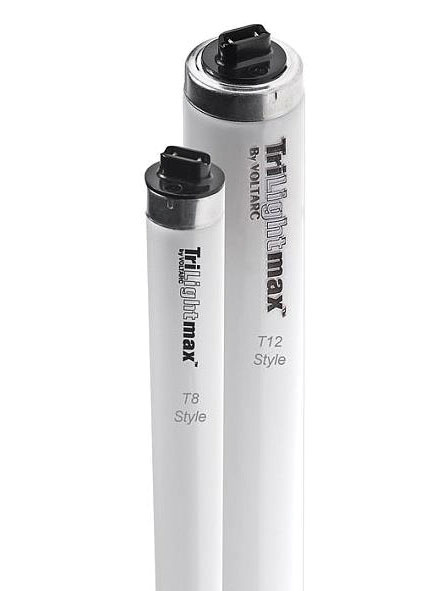Your signs have obsolete lamps and ballasts. What are your options?
By French Bolen
The National Lighting Bureau (NLB) estimates that there are 500 million T12 lamps installed in commercial, industrial and other non-residential systems nationwide. Outdoor signage is currently exempt from the interior T12 fluorescent tube elimination mandate. The vast majority of T12 lamps are not in commercial signage, so the fate of T12 availability and pricing is linked with overall market demands.
Our company was asked to propose options to a global brand with 2,200 retail locations across the U.S. for whom we were already providing on-call and preventive sign maintenance. The majority of their signs were installed 10 to 12 years ago and nearly all contain T12 lamps with magnetic ballasts. Even though T12s may soon go the way of the dinosaur, magnetic ballasts for exterior signage applications are already extinct. Magnetic ballasts that work with T12HO lamps with recessed double contact (RDC) bases were no longer legal to produce after November 14, 2014.
Continuing to use energy inefficient T12 lamps but installing newer electronic ballasts would be like putting alloy wheels on an old car, for which you will soon be unable to get tires. Therefore, we did not include that option in our analysis.
First of all, the lamps you put in signs are not the same bi-pin style that you buy down at the hardware store for a couple of bucks. They are high output, heavy duty and use an RDC base that fits into a Kulka style socket, like those in the image below. RDCs are shrouded bi-pin connectors. There is a different gas mixture in outdoor HO lamps that make them more efficient and brighter in cold weather.
So what are the choices, pros and cons, and costs to retrofit? Let’s look at an overall comparison of the technologies: T12 high output, T8 long life and LED tubes.
 Options
Options
1. Retrofit T12HO Lamps with T8 Long Life Lamps
T8 tubes with RDC bases will fit in a T12 Kulka socket. You’ll need to remove the old ballast, rewire and then replace with a T8 electronic ballast. The light output is higher per watt from a T8LL than a T12HO.
Pros:
• Last five times longer
• Better warranty
• More efficient (73 watts vs. 95 watts for similar output)
•Lower cost of operation
Cons:
•T8 tube is five times more expensive
•Cost to retrofit ballasts and rewire
2. Retrofit T12 lamps with LED Tubes
LED tubes are relatively new technology but they keep getting better and cheaper. Unlike fluorescent light sources, LEDs do not contain a gas or a filament of any kind. Instead, the entire LED is a semiconductor. When electricity is passed through the semiconductor material, the electrons inside begin whizzing about, which releases energy in the form of visible light.
An LED lamp uses a power supply which functions as a transformer to step-down 120 volts to either 12 or 24 volts, depending on the LED system.
Pros:
•Instant on
• Don’t flicker
• Last at least four times as long
• Solid state so more durable
• Silent, no buzzing noise
• Five times longer warranty
• Save energy, lower cost of operation
• Maintenance labor savings
• Better for environment, no phosphor or mercury
Cons:
• High cost (about 25 times more expensive than T12s)
• Still relatively new technology
Summary
There is a 2.1-year payback for T8 long life tubes versus about 4 years for LED tubes. I hedge a bit and say “about” because it seems like every week I read about newer, better and cheaper LED tubes coming on the market. T8s are a safer bet right now but that might not last for long. Either way, don’t wait for the stock of magnetic ballasts and T12 tubes to run out before you make a decision. RFB
— French Bolen is vice president of sales and marketing for The InSite Group, a Knoxville, Tennessee-based organization comprised of passionate project management professionals born out of the signage industry who have completed over 30,000 projects across North America utilizing InSite Group’s qualified network of manufacturers and installers. Email the author at [email protected].
